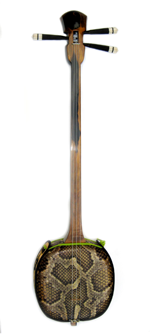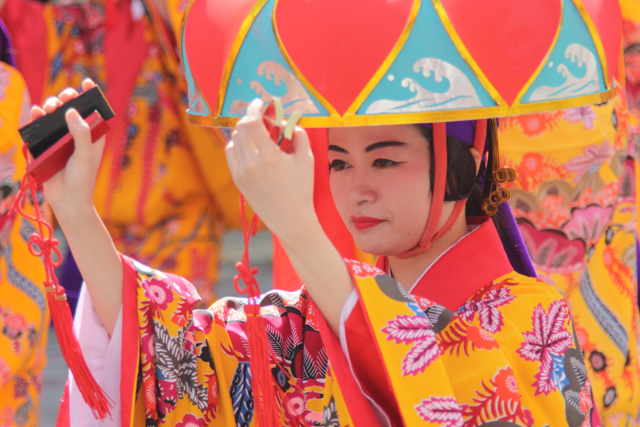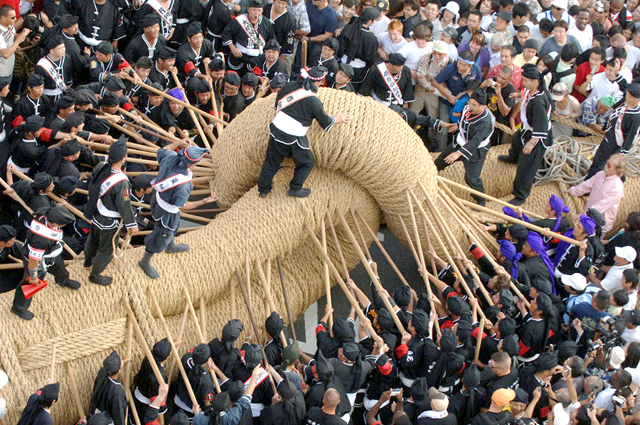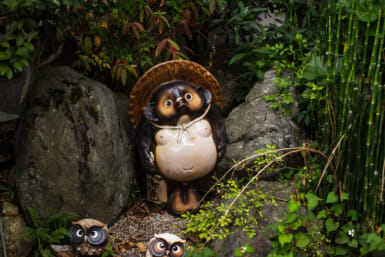Tuning in to the sweet airs of the Ryukyus’ melodies and rhythms.
By Andy Gayler
Music plays a crucial role in culture of Okinawa, from the drums and conch shell trumpets that accompany the Guinness-record sized tug-of-war that takes place in Naha every October to the joyous calls of a-yee-sa-sa! that go along with the traditional eisa dancing that marks the height of summer—not only in Okinawa but even in Shinjuku with its colorful annual occupation of the streets. In fact, it seems all of Japan becomes a bit Okinawan during the Obon period.
But as winter arrives and the mainland turns its attention to other more familiar, poppier, commercial tunes, the heartland of eisa goes its own unique way. For while the ensemble performances may no longer be filling the streets and festivals of Okinawa, it doesn’t mean the music of the Ryukyu archipelago goes into hibernation during the colder months. Switch on the radio or step into one of the many izakayas across the islands and you’ll be treated to the unmistakable twang of a sanshin and a traditional music scene that refuses to kowtow to the churning behemoth of the J-pop industry.
“Okinawan music really has nothing to do with Japan or Japanese music,” John Potter, the authority on Okinawan music for the English-speaking world, and a Brit who made his home in Okinawa after a long love affair with the music, explains. “It comes from different sources, has a different musical scale, and uses different instruments (sanshin, sanba), which are unique to the Ryukyu Islands. The people’s music, or folk music, is still very much alive here, unlike in mainland Japan where it is comparatively unusual for most people to sing or play traditional Japanese songs or instruments. I would say that Japan has largely lost its folk, traditional music scene, whereas it’s still very much alive throughout the Ryukyu Islands in songs, sanshin playing, dance, eisa and so on.”
Actually, the charts have been known to welcome the occasional Okinawan star and many people in Japan and internationally will be familiar with Rinken Band, Shoukichi Kina and his band Champloose, or Nenes, now renamed Nenez (part of a band, and brand, “reboot,” although the songs of old remain). All these incredible performers are still very much part of Okinawa’s minyo and shimauta worlds (the name applied to most of the traditional music from both the Okinawan islands and the Amami islands further north). And you can usually see them live on a visit to the islands: Shoukichi Kina dazzles most Saturdays at his club Chakra on Naha’s main street, Kokusai-dori; Nenez sometimes mesmerize at the club Shimauta, also on Kokusai-dori; and the lively Rinken Band have their own venue, Kalahaai, in Chatan, near the American Village shopping district, where they’ll get you toe-tapping at the very least.

The music all these and many, many other musicians, professional and amateur, play sprung up out of the demise of the Ryukyu Kingdom in 1879 when the court performers found themselves in need of a new job. As new entertainment ideas grew to fill the void, today’s folk songs gradually evolved and became familiar to all. Nowadays, the older songs continue to be a popular part of the repertoire of a musical establishment that understands its roots, but new ideas are continually being introduced and the musicians are keen to forge links with fellow artists all over the world: Shoukichi Kina’s collaboration with Ry Cooder is one well-known example, and as Potter points out, performer Mutsumi Aragaki is doing “some interesting things,” including a trio called MKR Project that plays “both traditional and original songs,” as well as an upcoming collaboration with Malian musician Mamadou Doumbia. (Potter adds that the duo will be playing in Tokyo during the month of November, so keep your eyes and ears open!)
The music of Okinawa is actually incredibly varied and only the most dour sourpuss could be dismissive of its range, warmth and the creativity it nurtures. If you don’t go for the legendary Misako Oshiro’s heart-piercing voice then perhaps the sheer energy of a Champloose number will shake you out of your cynic’s stupor. These islands are alive to music – go and see if you are as well.
To learn more about the contemporary Okinawan music scene, visit John Potter’s site at powerofokinawa.wordpress.com.
Sponsored Post
Updated On July 18, 2017










